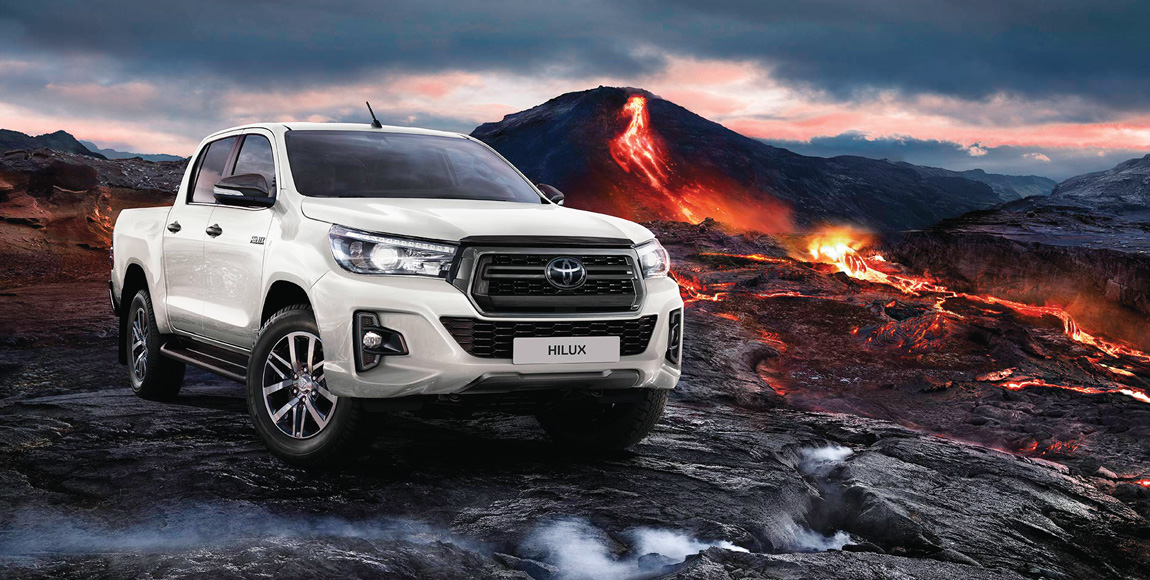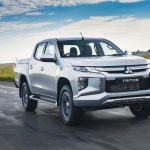Bakkie prospects on the rise

High demand for light commercial vehicles in South Africa is driving a consumer trend that signals a shift away from the passenger-car market. WYNTER MURDOCH reports
South Africa’s light commercial vehicle (LCV) segment represents one of the few sectors of the automotive market that appears to have retained significant consumer backing, despite the crippling effect of the country’s recessionary economy on purchasing power.
New-vehicle sales figures for July indicated that, while the total market dropped by 3,7 percent to 46 077 units compared with figures for the corresponding month last year, consumers remained keen to part with hard-earned cash in favour of bakkies and vans.
At least, that’s how Ghana Msibi, executive head of motor at finance house WesBank, interprets the statistics. He says that with 13 852 vehicles sold in the month in the LCV sector – an increase of 2,9 percent against sales recorded in July last year – consumer allegiance appears to have shifted away from the passenger-car market where, comparatively, sales declined by a hefty 8,2 percent to 29 477 units. That means, in effect, that LCV sales in July amounted to almost half the total achieved by cars.
“On a year-to-date basis, sales of new passenger cars are down by 5,4 percent, while the LCV market is down by one percent,” Msibi says, pointing out that the motor trade is feeling the effects of significantly reduced consumer spending power, partly as a result of job retrenchments that have cut employment numbers across a variety of sectors.
So, why the apparent shift of market towards LCVs? Some industry observers believe South Africa’s love for the bakkie stems from the practical benefits it offers as both workhorse and leisure vehicle. With employment trends indicating a rise in the number of self-employed service providers and independent contractors, vehicles that can be used for business purposes during the week and as recreational vehicles on weekends are growing in popularity.
The country’s top-selling vehicle in July – Toyota’s Hilux, which accounted for 2 996 units – has long been a first-choice purchase among bakkie buyers with the vehicle’s reputation for quality, durability, reliability, refinement and safety helping to keep it at the top of the sales charts.
Calvyn Hamman, head of sales and marketing at Toyota South Africa Motors, says there are not many locally manufactured vehicles that can claim the iconic status that the Hilux has achieved in South Africa. “Not only has it sold more than a million units locally since its introduction 50 years ago, it continues to be a sales sensation even in the trying economic climate we are experiencing.”
Additionally, the model sealed the second quarter of 2019 with its highest-ever recorded monthly sales total in South Africa. The June figure – 4 770 units – represented 35 units more than the previous highest total, recorded in 2011. In setting the benchmark, double-cab versions of the model accounted for 1 885 units, Xtra cabs for 1 648 units and single cabs for 1 237 units.
“We’re delighted with the strong sales we’ve had,” says Hamman. “Clearly, being a tried and trusted brand is a strong purchasing factor in the current economy.”

Toyota is not alone in setting the LCV pace. Ford’s sales in the segment in July totalled 2 266 units, the bulk of purchases comprising newly launched Ranger double-cab derivatives, which, like the superseded version, are proving to be a success story for the brand.
According to Doreen Mashinini, the company’s general manager for marketing, the Ranger remains not only one of South Africa’s top-selling vehicles, but also one of the country’s leading LCV exports to markets in Europe, the Middle East and Africa.
Manufactured at Ford’s Silverton plant near Pretoria, the new model features styling changes as well as technologies designed to help boost its reputation for safety, refinement, convenience and comfort – factors considered vitally important to the consumer market.
“With a choice of new diesel engines, a revolutionary new ten-speed automatic gearbox and a revised suspension set-up, this is by far the biggest upgrade yet for the current-generation Ranger,” Mashinini adds.
To accommodate export as well as local orders for the model – as well as for its high-performance sibling, the Ranger Raptor, and the Everest SUV with which it shares a platform – last month Ford introduced a third shift at the plant.
Upgraded in 2017 as part of a R3-billion investment aimed at increasing output at Silverton from 124 000 vehicles a year to 168 000, the third shift adds 214 units a day to production, bringing the total number of models coming off the assembly line every 24 hours to 720.
“Introduction of the third shift allows us to satisfy the strong demand from customers in South Africa, as well as for our crucial exports to 148 markets around the world,” says Ockert Berry, vice president of operations for Ford Middle East and Africa.
He says the extra shift has created 1 200 new jobs at the plant, taking Ford’s total employment in South Africa to approximately 5 500 employees. At the same time, it has bolstered employment at component-supplier companies by adding around 10 000 jobs to the sector. “In total, Ford’s local vehicle-assembly operations now support some
60 000 jobs within the total value chain,” Berry maintains.
It’s not only consumers who think locally manufactured LCVs are worth sustaining. South Africa’s president, Cyril Ramaphosa, thinks so, too. In a recent address delivered at Nissan’s assembly plant at Rosslyn – at an event to announce that the company would add the full range of Navara bakkies to its local production schedule, again representing a multi-million-rand investment – Ramaphosa acknowledged that the automotive sector formed an essential part of the industrialisation of the South African economy.
“The sector is a reliable partner, but it is also a dependable ally, as it has demonstrated by this investment, on our path to position manufacturing as a catalyst to development and inclusive growth,” he said.
Assembly of the Navara range at Rosslyn is scheduled to begin next year, and will grow the plant’s production output by more than 50 percent. Currently, derivatives in the best-selling NP200 range – a model which is consistently among the country’s top-five LCV choices, accounting for about 2 000 units a month – as well as the NP300 Hardbody, are among the vehicles manufactured at the plant.
Echoing his executive counterpart at Ford, Mike Whitfield, managing director of the Nissan Group of Africa, says in order to meet local and export demand, a two-shift operation will be required to accommodate the Navara’s production. “This alone will result in the creation of an additional 400 jobs,” he says. “Hundreds more vacancies will be created, though, at Nissan as well as within the local component-supplier industry.”
He adds: “The company has a deep understanding of the need to invest in skills development in a meaningful way – not just for our benefit, in terms of having a skilled workforce at our technologically advanced vehicle-manufacturing plant; but for the benefit of all the eager, young minds in this country, who are simply seeking opportunities to improve themselves.”
With sales of double-cab bakkies outnumbering those of single-cab derivatives across the LCV range, it’s not surprising that Mazda South Africa has decided that its upcoming BT50 – to be launched in 2021 as replacement for its eight-year-old, Ford-based equivalent – will not include a single-cab workhorse.
Craig Roberts, Mazda SA’s managing director, says the new model, developed in collaboration with Isuzu, will be aimed at private buyers who, in the main, represent leisure users rather than commercial fleet operators. “That’s where we think the consumer trend is heading,” he says, adding that since Mazda considers the bakkie to be representative of a true crossover vehicle, the upcoming version will incorporate premium-quality features aimed at making it a competitive rival to SUVs.
“I’ve seen the styling designs for the new vehicle,” he says, “and the overall look is far more muscular than that of the model it will supersede. Also, to reinforce premium-quality concepts, it will sport a cabin comparable to that of the current Mazda CX-5’s. I think the strategy will prove right for the South African market.”
Roberts adds that though the launch of the vehicle remains a long way off, the model is seen as imperative from a brand perspective. “In terms of sales, South Africa represents only fractionally over one percent of Mazda’s annual global volume – yet our performance here is regarded as important to the company’s overall success.
“From a local perspective, our share of the market is equally vital. We’re in business to generate a profit, and we have to ensure a realistic line-up of vehicles that is going to help us to achieve that aim. In terms of our ‘more premium’ strategy, we are committed to delivering quality products that will move the needle for brand value. The BT50 will play an important role in meeting that objective.”
Published by
Focus on Transport
focusmagsa




